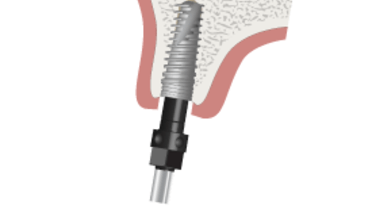-
0
Patient Assessment
- 0.1 Patient demand
- 0.2 Overarching considerations
- 0.3 Local history
- 0.4 Anatomical location
- 0.5 General patient history
-
0.6
Risk assessment & special high risk categories
- 5.1 Risk assessment & special high risk categories
- 5.2 age
- 5.3 Compliance
- 5.4 Smoking
- 5.5 Drug abuse
- 5.6 Recreational drugs and alcohol abuse
- 5.7 Parafunctions
- 5.8 Diabetes
- 5.9 Osteoporosis
- 5.10 Coagulation disorders and anticoagulant therapy
- 5.11 Steroids
- 5.12 Bisphosphonates
- 5.13 BRONJ / ARONJ
- 5.14 Radiotherapy
- 5.15 Risk factors
-
1
Diagnostics
-
1.1
Clinical Assessment
- 0.1 Lip line
- 0.2 Mouth opening
- 0.3 Vertical dimension
- 0.4 Maxillo-mandibular relationship
- 0.5 TMD
- 0.6 Existing prosthesis
- 0.7 Muco-gingival junction
- 0.8 Hyposalivation and Xerostomia
- 1.2 Clinical findings
-
1.3
Clinical diagnostic assessments
- 2.1 Microbiology
- 2.2 Salivary output
-
1.4
Diagnostic imaging
- 3.1 Imaging overview
- 3.2 Intraoral radiographs
- 3.3 Panoramic
- 3.4 CBCT
- 3.5 CT
- 1.5 Diagnostic prosthodontic guides
-
1.1
Clinical Assessment
-
2
Treatment Options
- 2.1 Mucosally-supported
-
2.2
Implant-retained/supported, general
- 1.1 Prosthodontic options overview
- 1.2 Number of implants maxilla and mandible
- 1.3 Time to function
- 1.4 Submerged or non-submerged
- 1.5 Soft tissue management
- 1.6 Hard tissue management, mandible
- 1.7 Hard tissue management, maxilla
- 1.8 Need for grafting
- 1.9 Healed vs fresh extraction socket
- 1.10 Digital treatment planning protocols
- 2.3 Implant prosthetics - removable
-
2.4
Implant prosthetics - fixed
- 2.5 Comprehensive treatment concepts
-
3
Treatment Procedures
-
3.1
Surgical
-
3.2
Removable prosthetics
-
3.3
Fixed prosthetics
-
3.1
Surgical
- 4 Aftercare
Parallel implant placement
Key points
- The drilling protocol will be influenced by the bone density and may vary depending on surgeon‘s experience and type/system of implant used
- Drilling must be accompanied by sufficient irrigation preventing the bone from overheating
- The surgeon should be familiar with the implant type/system and drills being used
Primary stability
Emerging techniques in dental implant surgery are trending towards one-stage procedures and immediate function and therefore require a high level of primary stability of the implant.
In order to implement the most appropriate drilling protocol based on bone quality, it is important to understand the anatomy of an implant from the head to the apex. Parallel implants with a narrow tip at the apex (for example NobelSpeedy), have the capacity of compressing and expanding the bone when inserted, working as an osteotome.
Drill procedure considerations
In order to achieve a good primary stability in poorly mineralized bone, an underpreparation drilling protocol together with bicortical anchorage is recommended, whenever possible aiming at primary stability. The insertion of the implants follows standard procedures, except that with underpreparation an insertion torque of at least 30 Ncm should be reached before the final seating of the implant.
- For 4.0 mm implants, the sites are prepared starting with a precision drill or round drill to mark the final positioning of the implant. The preparation is typically done by full drill depth with a 2 mm twist drill followed by 2.4/2.8 mm step drill and 3.2/3.6 mm (depending on bone density)
- In cases of very dense bone, the 3.8 mm step drill may be used in the cortical bone. Maintaining contact between the implant neck and the cortical bone is important for the primary stability. The implant neck is therefore aimed to be positioned at bone level and bicortical anchorage is established whenever possible
- For immediate function at least 35 Ncm torque force is needed
Detailed drilling protocols
For detailled information on osteotomy of the site and the drill protocol refer to the instructions and handbooks of the respective manufacturers and implants.
Clinical topics
Related articles
Additional resources
Additional external resources
Questions
Ask a questionNobel parallel drilling protocol
Helllo,
I am new in implantology and have question about laser marks on nobel parallel drills. I can not find any info about distance between 2 lines on first silver mark. Is it 0.5,1 or 1.5 mm. ? and is it mark for 8.5 implant length on drill? thx.
Helllo,
I am new in implantology and have question about laser marks on nobel parallel drills. I can not find any info about distance between 2 lines on first silver mark. Is it 0.5,1 or 1.5 mm. ? and is it mark for 8.5 implant length on drill? thx.
Nobel parallel drilling protocol
Helllo,
I am new in implantology and have question about laser marks on nobel parallel drills. I can not find any info about distance between 2 lines on first silver mark. Is it 0.5,1 or 1.5 mm. ? and is it mark for 8.5 implant length on drill? thx.
Helllo,
I am new in implantology and have question about laser marks on nobel parallel drills. I can not find any info about distance between 2 lines on first silver mark. Is it 0.5,1 or 1.5 mm. ? and is it mark for 8.5 implant length on drill? thx.
Nobel parallel drilling protocol
Helllo,
I am new in implantology and have question about laser marks on nobel parallel drills. I can not find any info about distance between 2 lines on first silver mark. Is it 0.5,1 or 1.5 mm. ? and is it mark for 8.5 implant length on drill? thx.
Helllo,
I am new in implantology and have question about laser marks on nobel parallel drills. I can not find any info about distance between 2 lines on first silver mark. Is it 0.5,1 or 1.5 mm. ? and is it mark for 8.5 implant length on drill? thx.
Nobel parallel drilling protocol
Helllo,
I am new in implantology and have question about laser marks on nobel parallel drills. I can not find any info about distance between 2 lines on first silver mark. Is it 0.5,1 or 1.5 mm. ? and is it mark for 8.5 implant length on drill? thx.
Helllo,
I am new in implantology and have question about laser marks on nobel parallel drills. I can not find any info about distance between 2 lines on first silver mark. Is it 0.5,1 or 1.5 mm. ? and is it mark for 8.5 implant length on drill? thx.





Nobel parallel drilling protocol
Helllo,
I am new in implantology and have question about laser marks on nobel parallel drills. I can not find any info about distance between 2 lines on first silver mark. Is it 0.5,1 or 1.5 mm. ? and is it mark for 8.5 implant length on drill? thx.
Helllo,
I am new in implantology and have question about laser marks on nobel parallel drills. I can not find any info about distance between 2 lines on first silver mark. Is it 0.5,1 or 1.5 mm. ? and is it mark for 8.5 implant length on drill? thx.